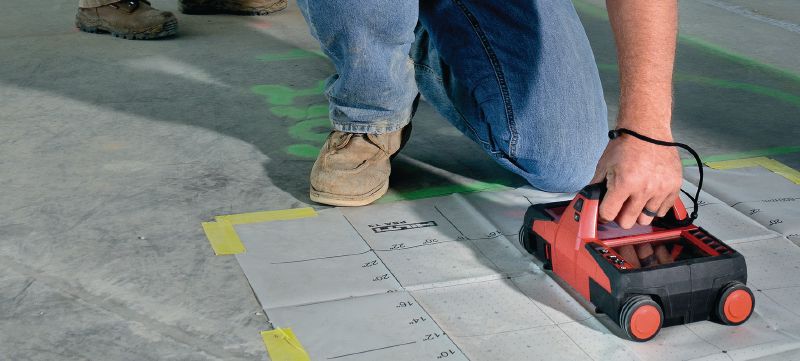Discover RainierGPR Service Areas for Reliable Concrete Scanning Solutions
Discover RainierGPR Service Areas for Reliable Concrete Scanning Solutions
Blog Article
Concrete Scanning: A Crucial Step In The Direction Of Making Certain Architectural Integrity and Security
In the world of construction and framework maintenance, the value of concrete scanning can not be overstated. This careful process holds the crucial to unveiling potential hazards concealed below the surface of apparently solid structures. By using innovative innovation and techniques, concrete scanning works as a pivotal device in guaranteeing that the honesty and safety of structures and bridges are supported to the greatest criteria. Nevertheless, past its surface-level effects, the function of concrete scanning prolongs much much deeper than meets the eye.
Importance of Concrete Scanning
Concrete scanning plays an important function in ensuring the architectural integrity and safety and security of structures and infrastructure tasks. By using advanced modern technologies such as ground-penetrating radar (GPR) and electro-magnetic induction, experts can non-destructively check concrete structures to spot possible problems, gaps, ingrained things, and support format. This process enables early discovery of abnormalities that could endanger the stability of a structure, preventing expensive damages and making certain the safety and security of residents.
Prior to boring, cutting, or coring right into concrete, scanning helps recognize the exact places of rebar, post-tension cable televisions, and various other embedded aspects, reducing the risk of accidental hits that could lead to structural weaknesses. Additionally, concrete scanning help in top quality control by verifying the thickness of concrete covers and identifying any type of inconsistencies that may influence the overall durability of the framework.
Modern Technology for Concrete Evaluation

Advantages of Early Discovery
Prompt detection of structural problems can dramatically minimize dangers and guarantee the long life of building tasks. By identifying possible troubles beforehand in the building and construction process, stakeholders can take aggressive actions to address problems prior to they intensify into bigger and much more costly issues. Among the vital advantages of early discovery is the avoidance of structural failings, which can present severe safety and security hazards and lead to task delays and monetary losses.
Moreover, advice early discovery permits prompt repair services and upkeep, which can help expand the life-span of the framework. By resolving problems promptly, building groups can stay clear of costly repairs or also the need for premature replacement of structural parts. This positive approach not only saves time and cash yet likewise boosts the overall security and sturdiness of the building and construction task.
Furthermore, early discovery can improve task preparation and decision-making by giving stakeholders with beneficial understandings right into the condition of the structure. Armed with this details, task managers can make educated choices concerning building products, timelines, and techniques, bring about a lot more successful and efficient job outcomes.
Guaranteeing Structural Security
Making certain the architectural security of a building job is extremely important to its safety and security and long life. Concrete scanning plays a critical role in ensuring architectural security by finding prospective problems such as gaps, delamination, or support rust that might endanger the stability of the structure over time.
By utilizing sophisticated scanning modern technologies like check it out ground-penetrating radar (GPR) and electromagnetic induction, construction experts can non-invasively inspect concrete structures to recognize locations of concern below the surface. This positive approach permits the very early detection of defects or weak points, making it possible for punctual repairs or support to avoid architectural failings.
Routine concrete scanning throughout various construction phases and throughout the life cycle of a structure can assist preserve its security, minimize dangers, and ensure the safety and security of occupants. By focusing on architectural security through concrete scanning, construction projects can enhance their resilience and toughness, inevitably adding to higher safety and security and longevity.

Avoiding Vital Failures
Implementing regular evaluations, such as concrete scanning, can disclose surprise defects like spaces, fractures, or rust that might endanger the honesty of a structure. By making use of innovative scanning modern technologies like Ground Penetrating Radar (GPR) or Concrete X-ray, engineers can non-destructively assess the problem of concrete and identify weak points that call for support or repair service.

Conclusion
To conclude, concrete scanning plays a vital function in ensuring architectural honesty and safety by using advanced modern technology for very early detection of prospective concerns. This proactive approach aids protect against crucial failings and makes sure the security of structures. It is necessary to focus on concrete inspection as a basic method to shield the longevity and security of buildings and infrastructure.
Concrete scanning plays a critical function in making sure the structural stability and safety and security of structures and infrastructure projects. Furthermore, concrete scanning aids in top quality control by confirming the thickness of concrete covers and finding any kind of disparities that might affect the overall durability of the structure. Concrete scanning plays a vital function in guaranteeing structural security by finding prospective problems such as voids, delamination, or reinforcement deterioration that can compromise the honesty of the structure over time.
In conclusion, concrete scanning plays an important duty in making sure architectural stability and security by utilizing innovative modern technology for early discovery of prospective issues.
Report this page